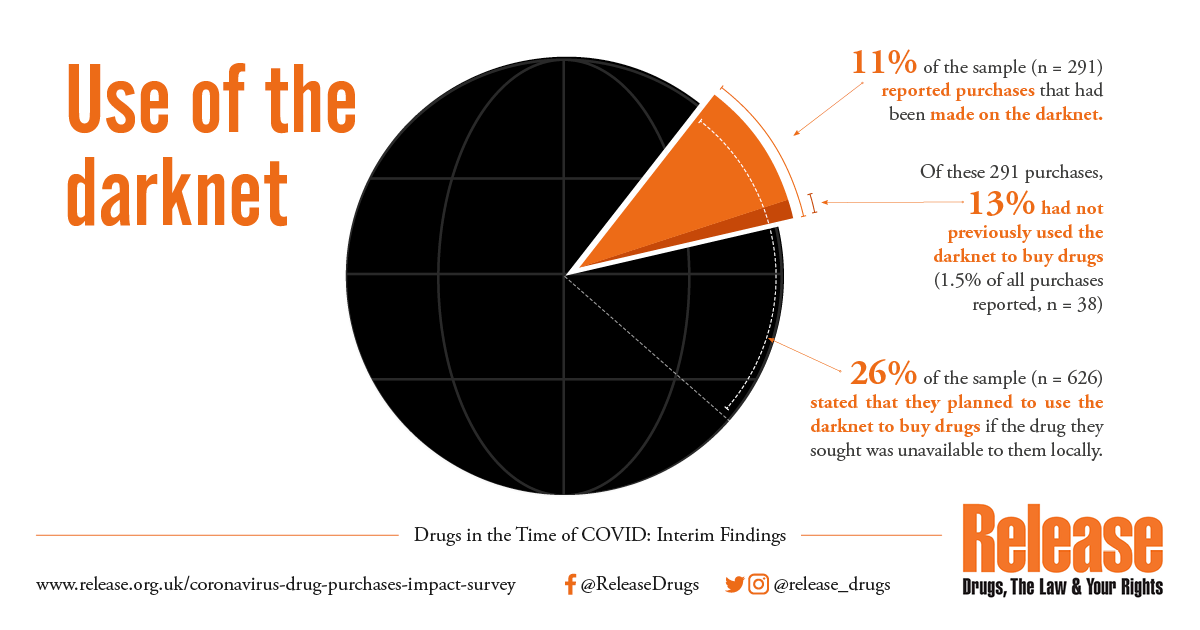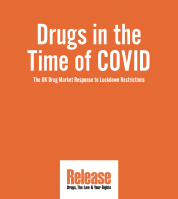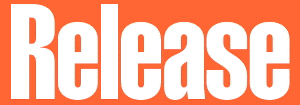This interim report presents findings from the first 2,621 responses, received between the survey’s launch on the 9th April 2020 and the 17th September 2020 (inclusive); which captures drug purchases made in anticipation of and during the first national lockdown, as well as purchases made during the easing, and eventual lifting, of that first lockdown.
Read the press release here.
Findings from 18th September 2020 onwards, and overall, will be published in the final report in May/June 2021.
The Main Findings
The majority of respondents did not report finding a supplier, or a desired drug, to be more difficult when comparing their experiences to before the start of the COVID-19 pandemic. However, difficulties in finding a supplier, and a desired drug, were more often reported as the first national lockdown eased and lifted an observation consistent with supply shortages.
More than 1 in 10 purchases were made on the darknet. Of these purchases, 13% had not previously used the darknet to buy drugs, and over a quarter of the sample stated that they planned to use the darknet to buy drugs if necessary, signalling a shift to darknet markets that may have been prompted by the pandemic.

Share this image
Reports of price(s) being higher than they were prior to the pandemic were more frequent than reports of prices being the same or lower. Higher prices were more often reported as the first national lockdown eased and lifted – an observation consistent with supply shortages.
The majority of respondents reported that the purity of their purchase remained the same (and for some, actually increased). This is consistent with suppliers responding to drug shortages by increasing prices and perhaps reducing deal-sizes, as opposed to using adulterants to bulk out products.
Purchases of cannabis products were most commonly reported across all periods of the pandemic (7 in 10 purchases overall), as expected. We found relatively infrequent purchases of MDMA/ecstasy, and other drugs associated with going out/partying - consistent with fewer opportunities to socialise related to pandemic-related restrictions.
In connection to almost two-thirds (62%) of drug purchases made during lockdown, respondents reported that their suppliers adhered to government-advised social distancing measures. There is evidence that some suppliers also adopted additional measures, similar to those adopted by licit markets (for example, accepting card payments and disinfecting cash), in order to further prevent virus transmission.

Share this image
More respondents reported that their drug use had increased, rather than decreased or stayed the same, since the start of the pandemic.

Share this image
When comparing their experiences to before the pandemic, more respondents reported increased contact with the police than reduced, or the same level of, contact with police.
When comparing their experiences to before the pandemic, more respondents reported experiencing increased withdrawal symptoms, increased non-fatal overdoses, and increased injection equipment-sharing, than reduced, or the same level of, these harms.

Share this image
The survey is still live and can be accessed here.





